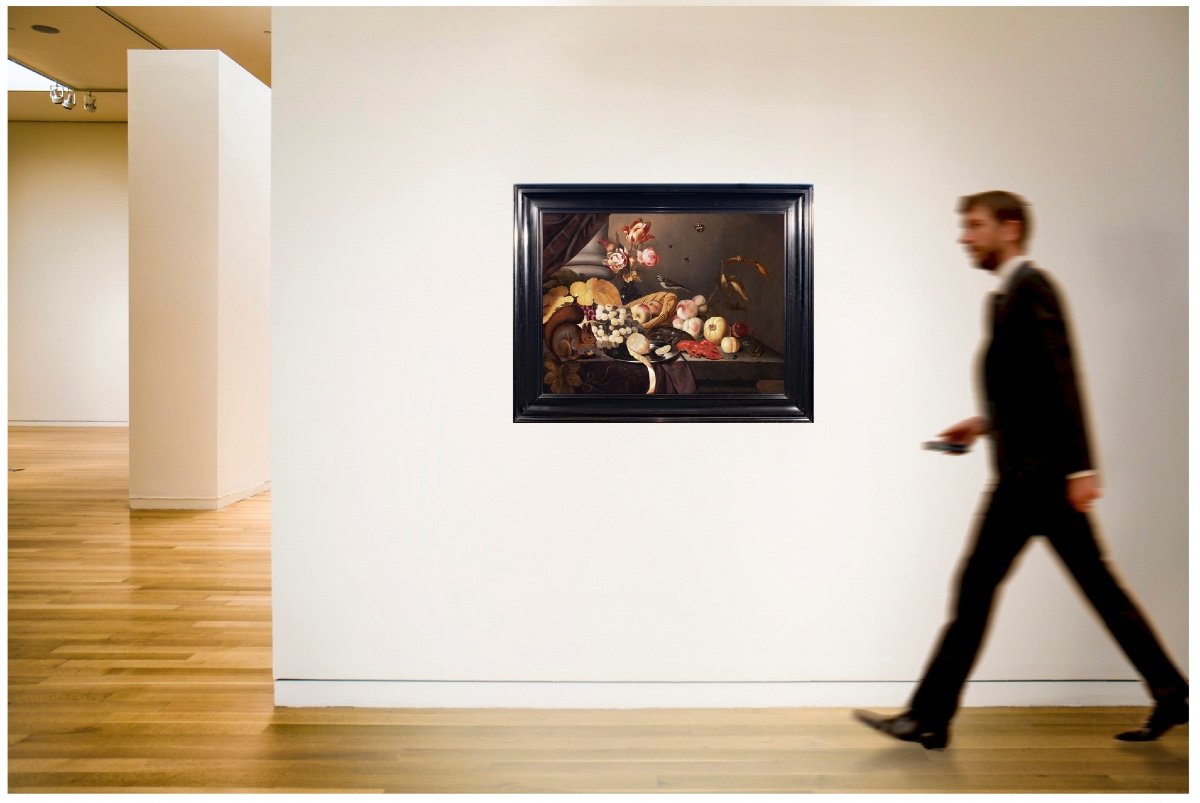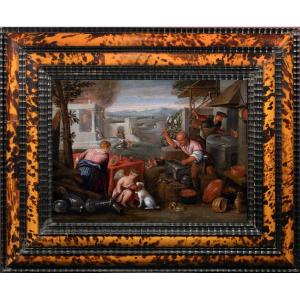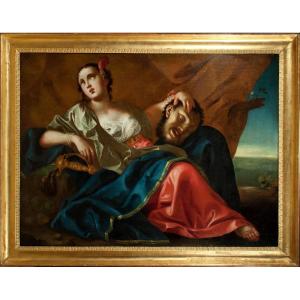Oil on oak panel (three boards) unparqueted
Signed with the monogram lower right: IB. F
Presented in a wide molded ebony veneer frame.
Total dimensions: 82 x 104 cm. The panel alone: 60 x 81 cm
The intensification of agriculture since the beginning of the 16th century was accompanied by a promotion of the botanical sciences, the discoveries of which entered the literature, which also contained advice for improving the cultivation of fruits.
The painters are not content to show vegetables piled up in baskets, but also bowls literally crumbling under the profusion of fruit of all kinds.
Just like today, large fruits with a rich, juicy pulp, obtained by grafting and special cultivation, were already appreciated at that time.
But also freshly picked fruits such as grapes, apples and quinces.
And also the flowers, without forgetting the rare and famous tulips.
This very beautiful still life is characteristic of the opulent compositions very fashionable in Flanders in the 17th century, carefully although simply arranged and often archaic by their system of superposition.
The painter masterfully employs a greasy, creamy substance and delicate glazes, as well as a dazzling palette of brilliant tones that are always well harmonized. Indeed, the play of subtle shades, such as the vermilion red of the lobster, the golden yellow of the lemon, the purple of the curtain which falls on the stone entablature, illustrate this discreet and refined chromatic balance.
The background is sober, overhead light illuminates the entire composition and licks part of the stone wall.
To this are added a squirrel and a wagtail, more insects such as flies, ants, butterflies (a Vulcan); two lobsters, raw and cooked and finally a lizard (rather unusual on a table)
Our exceptionally well-preserved painting perfectly illustrates the still lifes of Jan Baptist Van Fornenburgh.
Born in Antwerp in 1585, Jan Baptist van Fornenburgh died in The Hague in 1650. He became a member of the guild of painters in The Hague in 1629, when he had already been active for twenty years. Some twenty paintings are now attributed to him with certainty.
According to the RKD, he signed his works with a monogram "IBVF" or "IBF", sometimes simply "IB".
The career of this painter of flowers and fruits, who clearly observed with attention the works of Baltasar van der Ast and Ambrosius Bosschaert, like them willingly populating his compositions with lizards or small insects, still remains to be discovered and documented...
Very good condition. Sold with invoice & certificate of expertise
Payment facilities (contact us)










































 Le Magazine de PROANTIC
Le Magazine de PROANTIC TRÉSORS Magazine
TRÉSORS Magazine Rivista Artiquariato
Rivista Artiquariato